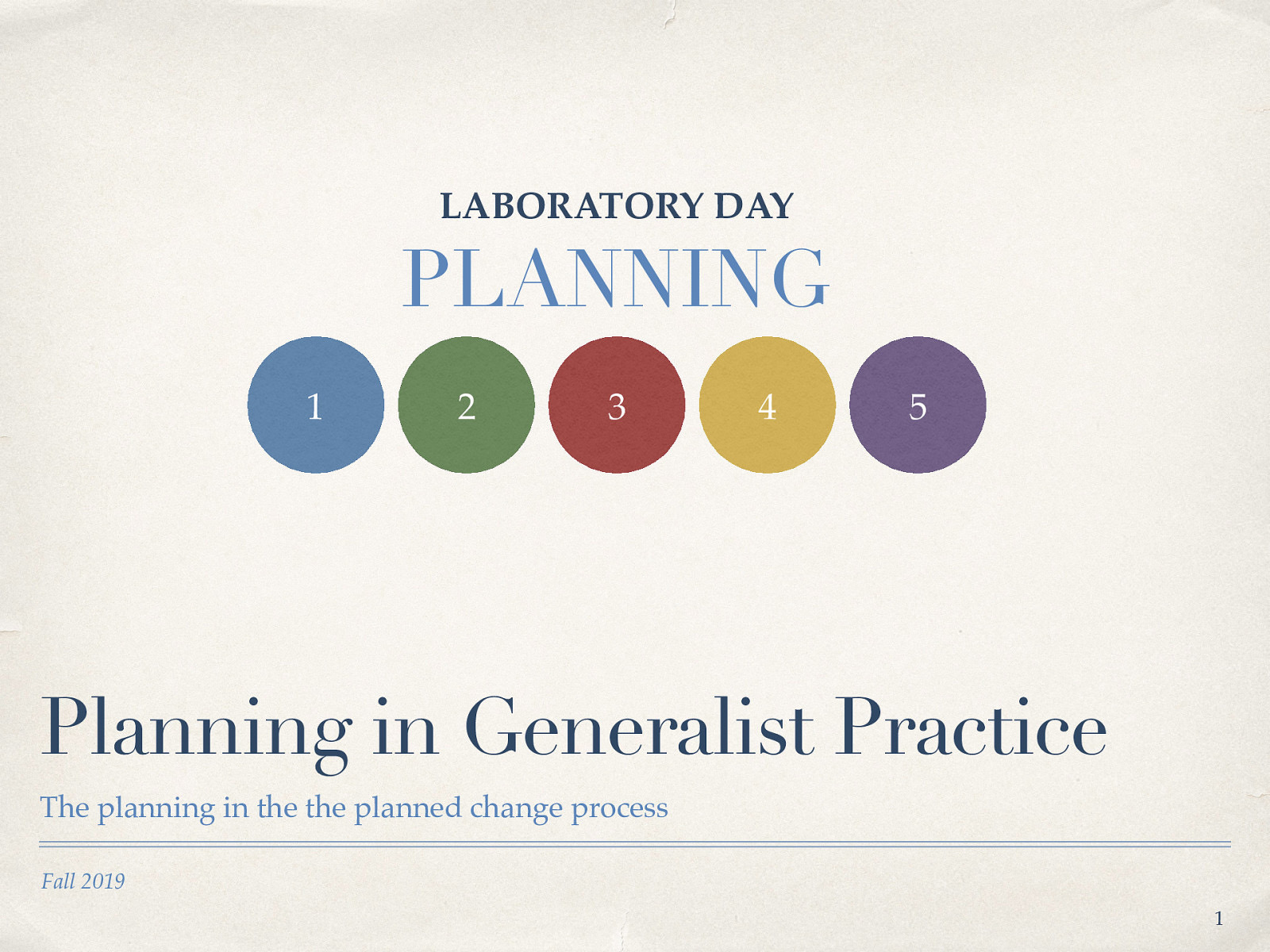SOWK 486 Week 11 - Lab Day - Planning in Generalist Practice
A presentation at Heritage University in October 2019 by Jacob Campbell and is tagged with Heritage University, BASW Program, SOWK 486w
Description
A dive into more on planning. Agenda is
- Thinking distortions
- Goals and objectives
- GTD and keeping everything organized.



![Taken from http://www.instructables.com/id/Mathemagic/ [Whole Class Activity] Do the think of any number activity: I want you to to think of a number, any number. I will warn you that picking complicated numbers (decimals, fractions) will yield complicated math problems. Multiply you number by 2 Add 10 to your number Divide that number by 2 Subtract your original number The number you are thinking of now is 5 While that is isn’t mind reading or directly a thinking distortion… it can be easy to jump to conclusions or be difficult to realize why something is the way that it is.](https://presentations.jacobrcampbell.com/IcPBVF/deck-4035-large-3.jpeg)
![The most common types of distortions and negative thinking patterns conceptualized by Beck (1976) have been summarized in the literature (Cormier, Nurius, & Osborn, 2009; Leahy & Holland, 2000; Walsh, 2006) and are as follows: [Whole Class Activity] Discuss each of the thinking errors, what they mean and possible examples of them. Can also look at what the opposite is that you would be trying to encourage in clients. All or nothing thinking Blaming Catastrophizing Discounting positives Emotional reasoning Inability to disconfirm: blocking ideas that don’t confirm beliefs Judgment focus: perception of self / others is based on assessment (focused on quality not description) Jumping to conclusions Mind reading Negative mental filtering: singling out bad events and ignoring positives Overgeneralization or globalization Personalizing: Taking on more responsibility for things then somebody has (i.e. role or actions made it happen) Regret orientation: focused on the past. “Should” statements: self failures Unfair comparisons What ifs [Small Group Activity] Share with a partner about some of the thinking distortions that are present in the media and then some that you have to some degree or the opposite of those.](https://presentations.jacobrcampbell.com/IcPBVF/deck-4035-large-4.jpeg)

![Grohol, J. M. (2018, Oct 29) 10 proven methods for fixing cognitive distortions. Retrieved from https://psychcentral.com/lib/fixing-cognitive-distortions/ Use worksheet: Law & Order, Psychology Edition: Fixing Your Thoughts [Small Group Activity] Individually complete the worksheet putting your thoughts on trail for a time you remember using a thinking distortion. Share with a partner after after.](https://presentations.jacobrcampbell.com/IcPBVF/deck-4035-large-6.jpeg)



![It can be difficult sometimes to be able to see the difference between a goal and an objective. Here is an example: Goal in Client Voice: “I want to get my GED?” Treatment Goal: Jane will be able to organize her thoughts and apply her skills to be able to apply for and take her GED. Objective 1: Jane will sign up for the GED by the end of December. [Whole Class Activity] Give some examples of client voiced goals, come up with possible specific goals and specific objectives for each one.](https://presentations.jacobrcampbell.com/IcPBVF/deck-4035-large-10.jpeg)
![[Whole Class Activity] Have class think about their goals for their class while they are in the BASW program. Create a goal, objectives, and action steps What do are the needs for students What would the longer-term vision be (e.g. goal) What would be some measurable steps in between (objectives) What would be some action steps](https://presentations.jacobrcampbell.com/IcPBVF/deck-4035-large-11.jpeg)
![Working with a diverse set of clients dictates being organized. [Discussion] How do you keep yourself organized? What to keep track of Tasks you gave yourself Tasks you gave your client Tasks your supervisor has given you Paperwork deadlines Various resource information (who, for what, services, guidelines… etc) Having a set up system David Allen discusses a Buddhist idea of mind like water. How it is calm and tranquil until it is called into action, for example throwing a stone into the water.](https://presentations.jacobrcampbell.com/IcPBVF/deck-4035-large-12.jpeg)








![Allen describes ideas related to [Whole Class Activity] Discuss what each topic is. Context, Action Step, and Project.](https://presentations.jacobrcampbell.com/IcPBVF/deck-4035-large-21.jpeg)




